They trek the Himalaya, they study mangroves in Malaysia, and build schools in Bali. They are students at Dragonfly’s outdoor education program and they are doing more than having adventures ; they are learning social and emotional skills that will last a lifetime.
Whether it is in Japan, Fiji, Hong Kong, China, Nepal, Malaysia, Indonesia or Nepal, emotional intelligence (EQ) is being integrated into every program at Dragonfly.
Established in 2002 in Hong Kong, Dragonfly is a leading provider of outdoor education and experiential learning in China and throughout Asia. Dragonfly is also a Preferred Partner of Six Seconds. For Dragonfly’s Director, Will Heutinck, Six Seconds brought him a whole new way to instill social emotional learning (SEL) in his program, his staff, and his students.
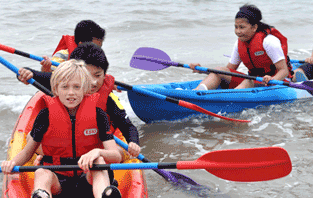 Dragonfly runs year-round outdoor education, Mandarin immersion courses, and service learning projects for primary, secondary, and university students. Personal development is at the core of each of these areas.
Dragonfly runs year-round outdoor education, Mandarin immersion courses, and service learning projects for primary, secondary, and university students. Personal development is at the core of each of these areas.
Let’s talk about your program: What’s one story you can tell where EQ came into play?
The story I can tell is about how I got into this industry to begin with. I was a teacher in Hong Kong and I started to develop the school’s outdoor programs. We went to a program in northern Thailand. They had a really good facilitator for their language modules. One of my students was very bright in math and language, but in other things he really didn’t care.
We went through this leadership day, and his reflection at the end of the day was that he’s interested in what he’s good at, and other things he doesn’t like or care about. After reflecting on this, he resolved to commit himself to everything, to build himself up in areas of weakness, instead of just focusing on his strengths, that was his light bulb moment.
 When we came back to school he was resolved to do these things, so he signed up for the school play. This is a really academic-minded book-study kid and all of a sudden he’s going for a part in the play! Later when I saw him there was a dramatic change. When he came to Dragonfly, I would see him, and he had a very changed mindset, and you can trace it back to one moment, to a powerful reflection.
When we came back to school he was resolved to do these things, so he signed up for the school play. This is a really academic-minded book-study kid and all of a sudden he’s going for a part in the play! Later when I saw him there was a dramatic change. When he came to Dragonfly, I would see him, and he had a very changed mindset, and you can trace it back to one moment, to a powerful reflection.
I interviewed Jan Heenop from South Africa who is doing similar things with adventure learning. Being out in nature as a group and making group decisions can force some of these issues out into the open.
So if you have a group of students for five days it is intense. You can gain a lot out of it. Look at it as a percentage of the school year. Six percent of the school year interaction might be a five day program with us.
How did you connect Dragonfly with Six Seconds?
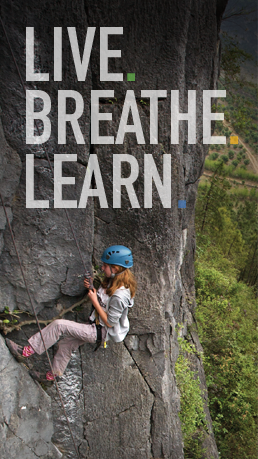 One of our senior managers who came in a few years ago was driven to instill SEL into our programs. He took bits and pieces from everywhere and modified if for our purposes and used it in our curriculum.
One of our senior managers who came in a few years ago was driven to instill SEL into our programs. He took bits and pieces from everywhere and modified if for our purposes and used it in our curriculum.
I contacted Natalie Roitman, the Six Seconds Regional Network Director for China, and we organized a Six Seconds course for our staff in Feb 2016. It was fast and happened right before our training program and the day after everyone took off to different places. We didn’t have much time to process it all. But it made me very curious to know more.
Our senior manager, Mike Thomas, and I went to the EQ Practitioner Certification (EQPC) and it was really valuable. I had limited knowledge of EQ and what it was and limited experience with the assessments and understanding what they could do. I was not sold yet. I was skeptical. Then I started having some of these aha moments in the practitioner course, and seeing how things related quite powerfully to my life, and started to see that what was coming out of the assessments was important and valuable .
Around November of last year we started to do the course for doing all the different assessments. One way you can look at the Six Seconds model is that it gives you something comprehensive and easy to understand. For our customers and clients, it’s something that they can get ahold of. We completed our Preferred Partner status in July, so close to a year ago.
How has it been working for you?
 It is useful. We’re a small company with really big demands on our time. We have about 6000 participants a year in our programs, but the nature of our business is extremely seasonal. Many of our training programs start in August, so I plan to introduce the model into our training programs for our big season in the autumn. That’s just the first step. In autumn, we’re usually out with about 400 kids a week. People work six day weeks and into the night. It’s intense.
It is useful. We’re a small company with really big demands on our time. We have about 6000 participants a year in our programs, but the nature of our business is extremely seasonal. Many of our training programs start in August, so I plan to introduce the model into our training programs for our big season in the autumn. That’s just the first step. In autumn, we’re usually out with about 400 kids a week. People work six day weeks and into the night. It’s intense.
We are training the incoming counselors and helping them integrate it into their lessons and programs. My dissertation was on this subject. How much do schools and teachers really know about EQ and what value do they place on it being integrated into an outdoor experience education program?
“We want a valuable reflection on the rest of your life when you’re done with a course.“
I found that teachers didn’t really know about EQ, people just wanted outdoor activities. When we ask teachers what their goals are, they say they just want to have fun. And we’re trying to do something much more specific.
It was good we instilled the Social Emotional Learning (SEL) model that we did because then we had the five key areas of SEL that we can hone in on and specific outcomes. People are still a little resistant. This autumn our initiative is to get all of our participants to do an assessment. So we’re going to be piloting it with 100 people in the spring to try to have over 3000 people do it this autumn. So that’s going to be a big administrative task. It’s to see how people respond. It will be voluntary, not mandatory. We’ll start to hopefully see people value the assessments and some of the things we produce from them.
How are you integrating EQ?
Now we’re using the Brain Brief Profiles for every student to generate a group Dashboard, and we want one Dashboard for every activity group. They have a dedicated group leader who is more the soft skills and reflection person who focuses on these things and does all the activities. Trying to have teachable moments and having them here and there throughout and experience.
How do they work EQ into their lessons? Isn’t it so busy doing outdoor stuff? Do they stop along the way?
 We have a caving expedition. What we do is have a mini solo. You’re sitting there in total darkness for a couple of minutes letting your thoughts wander, you take an opportunity to use that unique environment with so few stimuli to do a check in with people and see what they think.
We have a caving expedition. What we do is have a mini solo. You’re sitting there in total darkness for a couple of minutes letting your thoughts wander, you take an opportunity to use that unique environment with so few stimuli to do a check in with people and see what they think.
Are the EQ activities planned or organic?
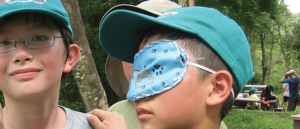 It’s mostly the latter. But we’re looking into planning it into activities more. If you’re going up a canyon and you know there are places you will pause, and the instructors know that is the place you will stop.
It’s mostly the latter. But we’re looking into planning it into activities more. If you’re going up a canyon and you know there are places you will pause, and the instructors know that is the place you will stop.
In our high season you have fifty instructors, you want to have a standard way of teaching. People come in for a three month period, so the more mapped out, the easier it is for them to learn it. Instructors who return can have more freedom in how they’re integrating EQ and the Six Seconds model. But they need to build up more experience.
Do your seasonal instructors get any training in EQ before they arrive?
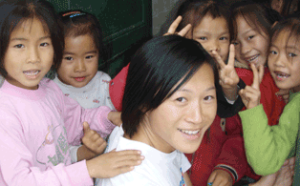 For instructors, we are putting together an online study course with Six Seconds. The idea is that it can track who does what. I am not sure how it will look at the end of this month, but we are excited about the possibility.
For instructors, we are putting together an online study course with Six Seconds. The idea is that it can track who does what. I am not sure how it will look at the end of this month, but we are excited about the possibility.
What are your thoughts on the connection between collaboration and EQ. Staff, students, etc.
Organizational 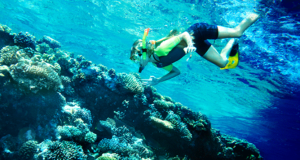 change takes effort and so getting myself, who has done a few courses, and getting others trained is a priority.
change takes effort and so getting myself, who has done a few courses, and getting others trained is a priority.
Getting more of our core staff to have at least a practitioner level, when you’re trying to build it into your company culture, it’s a challenge, trying to then bring in emotional intelligence, and walk the talk. It is a lot of internal collaboration.
We work very independently. We have staff who are full time based in China so we don’t see them very often, and people who work here. They are out in the field. We’re always all over the place. Trying to collaborate is a challenge. I think that among our senior staff, such as myself, and Mike, director of operations, we’ve been able to open up communication more since we’re started doing Six Seconds activities. Some people are in it and it’s progressing.
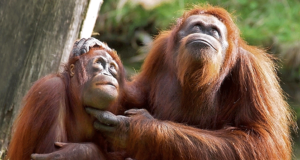 Collaborating with our seasonals is a big challenge; they need to learn about the different locations, the way we instruct, they need to be checked on all those activities. Also, how we are facilitating towards Six Seconds’ goals, how to understand a Dashboard, and setting up the online learning before they come is a real key to preparing them to come in.
Collaborating with our seasonals is a big challenge; they need to learn about the different locations, the way we instruct, they need to be checked on all those activities. Also, how we are facilitating towards Six Seconds’ goals, how to understand a Dashboard, and setting up the online learning before they come is a real key to preparing them to come in.
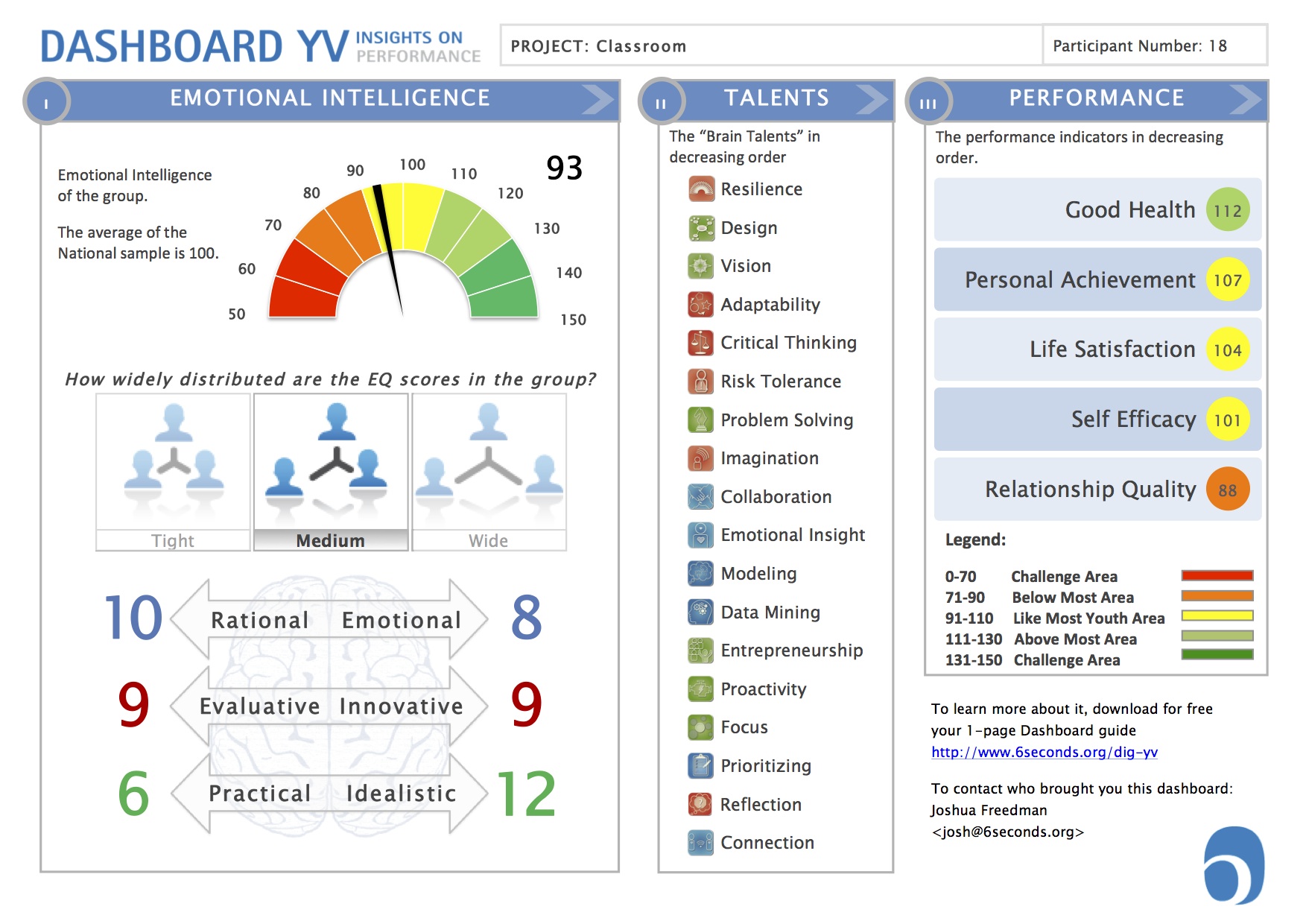 Going in this direction, with EQ and SEL and integrating that into experiential education changed the type of person we recruit and hire and who is interested in our program. We get more mature people who are interested in their craft, and getting away from the recreational view of outdoor education. That’s one of our goals.
Going in this direction, with EQ and SEL and integrating that into experiential education changed the type of person we recruit and hire and who is interested in our program. We get more mature people who are interested in their craft, and getting away from the recreational view of outdoor education. That’s one of our goals.
Do you teach about earth awareness?
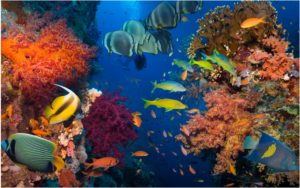 Many students have been trained growing up that outside is dirty and you don’t want to get dirty, so you have to overcome these things. We focus on ice breakers and team activities to orient people to be comfortable in nature. There are environmental activities, we do mangrove studies, beach cleanups, and then have instruction along those lines, and we talk about changing our habits. When it comes to consumption, Hong Kong is number one worst in the world for consumption. People can realize their consumption is responsible for environmental issues. We want to do more to increase EQ and environmental awareness.
Many students have been trained growing up that outside is dirty and you don’t want to get dirty, so you have to overcome these things. We focus on ice breakers and team activities to orient people to be comfortable in nature. There are environmental activities, we do mangrove studies, beach cleanups, and then have instruction along those lines, and we talk about changing our habits. When it comes to consumption, Hong Kong is number one worst in the world for consumption. People can realize their consumption is responsible for environmental issues. We want to do more to increase EQ and environmental awareness.
- Dragonfly: Social Emotional Learning Goes Outdoors - July 12, 2017
- Coaching with Computers? 3 Life-Changing Insights from the Neural Net - May 24, 2017
- Feelings About Climate Change: Josh Freedman - April 25, 2017




great program!I would like to connect with dragonfly!
Can I get their contact info?
Yay. Young or Natalie in our China team can connect you — I think you have their emails!
Is this something that has been done with deaf teens or aspergers/autism people?
I think it would be great for deaf teens. Both my boys are deaf.
Please let me know
Thank you
Tracy
What an amazing opportunity for your participants! Kudos! We just took our high school interns to the Thompson Island Outward Bound program. It has some similarities. You may want to collaborate. It’s in a partnership with the Boston Harbor Islands National Park. check out their website. Have a fabulous summer making a difference in many peoples’ lives.